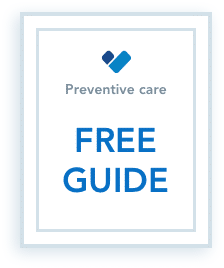What is the Affordable Care Act?
The Affordable Care Act is a healthcare reform law with three main goals:
Expand access to health insurance. In 2009, more than 50 million Americans had no health insurance coverage. People without health insurance got just half as much medical care as those with insurance, on average, and were more likely to end up in the emergency room.
Reform the health insurance industry. Before the ACA, health insurance companies were allowed to refuse coverage to people with pre-existing conditions, cancel coverage for people who needed a lot of medical care, and discriminate against patients in particular categories. The ACA ended those practices.
Reduce health care costs. Many of the provisions in the Affordable Care Act have to do with improving the quality of health care and making it easier to access. But the government also believed that the U.S. healthcare system was too expensive. The ACA reduces costs in many ways, including making health insurance affordable.
Read the entire bill here.
When did the ACA become a law?
The official name of the law is “The Patient Protection and Affordable Care Act of 2010.” It was enacted and signed into law by President Obama on March 23, 2010.
Title 1 of the law, “Quality, affordable care for all Americans,” made immediate changes in insurance regulations. It also called for cost savings in Medicare and Medicaid. These things happened right away.
The rest of the law had lots of provisions, but they didn’t apply immediately. These other rules gave people and organizations time to make changes. For example, the state exchanges discussed below didn’t have to be ready until 2014.
Different parts of the law kicked in at different times; some provisions won’t come into effect until 2019.
What is the Marketplace?
The ACA gives everyone the opportunity to buy health insurance. The government helps pay for the insurance, so that it can be affordable for everyone. These insurance plans can be found in the Marketplace.
The Marketplace is a website with affordable health insurance plans for individuals and small businesses. Private insurance companies like Blue Cross Blue Shield and Kaiser offer a variety of plans with a range of features and prices to suit individuals, families, and businesses. All Americans have access, but the options vary from one state to another.
States had the option of establishing their own insurance exchanges by 2014. State exchanges could be government entities or nonprofits, but they all had to meet certain requirements. For example, they can’t use marketing messages that might discourage people with serious health needs from signing up, and they have to offer stand-alone dental plans. They can only offer insurance programs that meet the standards of the Affordable Care Act.
ACA gives states a lot of flexibility:
- Some states have a state-based Marketplace, and their citizens apply for and manage their insurance at a website or websites run by the state.
- Other states operate their own exchanges, but use the federal platform at HealthCare.gov for enrollment and plan management.
- Some have a separate state-based exchange for the small business insurance program, but individuals living in those states go to HealthCare.gov to apply for and manage their insurance.
- There is a state-partnership Marketplace option that allows states to take on plan management and leave the rest to the federal government.
- Some states don’t operate their own exchanges at all. The federal government manages their insurance plans.
Enrolling… and not enrolling
Almost everyone who lives in the United States legally can enroll in health insurance through the Marketplace. People who are in prison and those who already have Medicaid or another kind of government health coverage cannot. People who have affordable health insurance through their employers also can’t choose to go through the Marketplace instead.
There are two different enrollment periods:
- The annual Open Enrollment Period (OEP) typically starts on November 1st, and ends on January 15th. During this time, all U.S. citizens, nationals, or legal residents living in the United States can apply for health insurance through the Marketplace. Check the details for immigrants.
- The Special Enrollment Period (SEP) is for people who have had a major life change. This can include a marriage or divorce, a new baby, leaving prison, moving, or losing insurance from another source. Find out if you qualify to enroll during an SEP here.
What happens when someone doesn’t enroll? If they already have qualifying health insurance, they’re all set.
However, those who choose not to enroll in health insurance must pay a monthly penalty equal to 2% of their income for the month. Over the course of a year, they’ll pay the combined total of those penalties — or the average cost of a bronze level insurance plan, whichever amount is smaller.
What types of coverage does the Marketplace offer?
All ACA approved insurance plans offer these kinds of essential health benefits:
- Ordinary medical services outside of a hospital
- Emergency services
- Hospital services
- Pregnancy, maternity, and newborn care
- Mental health services, including substance abuse treatment
- Prescription drugs
- Services and devices for people with disabilities
- Laboratory services
- Birth control coverage
- Preventive care and wellness services, including chronic disease management
- Pediatric services, including dental and vision care
Optional vision and dental plans are also available. Some plans may offer other services besides these essential services, and some states require more than the basics listed above.
To make things a little easier, we also created a FREE resource guide that lists all of the Essential Health Benefits included in every Marketplace plan. Grab it here and save to your computer for future reference.
What subsidies are offered?
Under the Affordable Care Act, the government helps people pay their insurance premiums. Subsidies include Advanced Tax Premiums and Cost-Sharing Reductions, both of which reduce your costs for health insurance.
The exact kind and amount of the subsidy an individual will receive is calculated by considering the number of people in their household, their income, and the Federal Poverty Level. In general, people who earn up to four times the Federal Poverty Level will be eligible for subsidies of some kind.
For example, if your income is twice as much as the Federal Poverty Level for the size of your family, the amount you have to pay for premiums can’t be more than 6.3% of your income. As you can see, these calculations can be complicated. That’s why, the Marketplace you visit will ask you some questions and do the calculations for you.
Next steps
The ACA is designed to give you access to affordable health insurance and to make it easy for everyone to get coverage. However, it’s still a complicated process. Choosing the right plan and figuring out how to enroll can be challenging. Enroll through HealthSherpa to make it easier.














[…] Enrollment (OEP) behind us, we’ve enrolled more than 66,500 people in health insurance under the Affordable Care Act (ACA). And within the first seven days of OEP, we’ve enrolled double the amount of people […]
[…] for care have come to the forefront of larger conversations around health in America. Thanks to the Affordable Care Act (ACA), coverage for mental health has expanded extensively, with abundant opportunities for care […]
[…] bill (commonly referred to as “the GOP tax bill”) containing future implications for the Affordable Care Act — including an eventual removal of the individual mandate. However, it is important to know that […]
[…] March 2010, President Obama signed the Affordable Care Act (ACA) into law, requiring that Marketplace plans cover preventive care services. Thanks to an […]
[…] care services are intended to prevent disease rather than treat an existing case. Affordable Care Act (ACA) plans offer an incredible array of preventive services, from immunizations and screenings […]